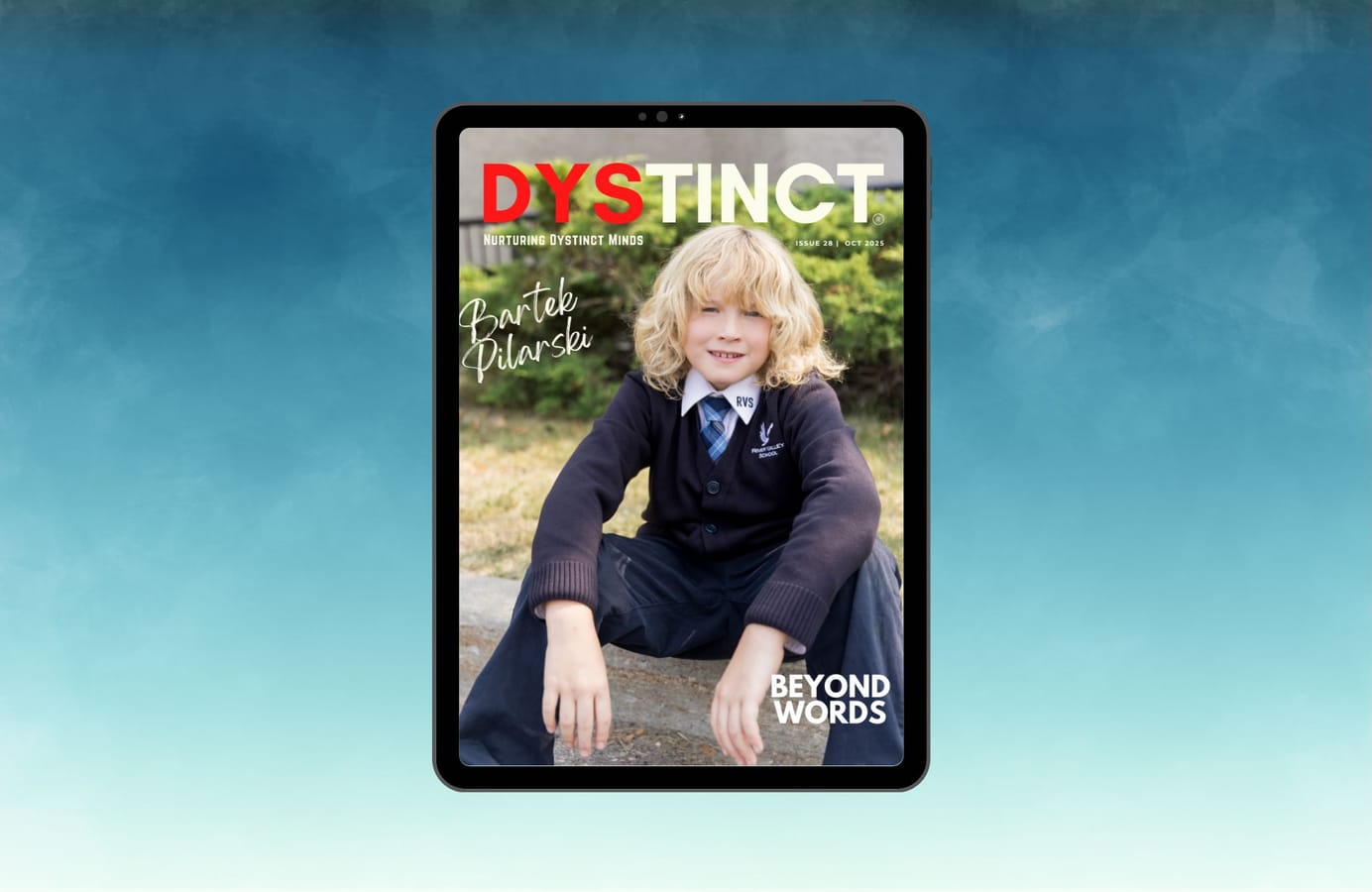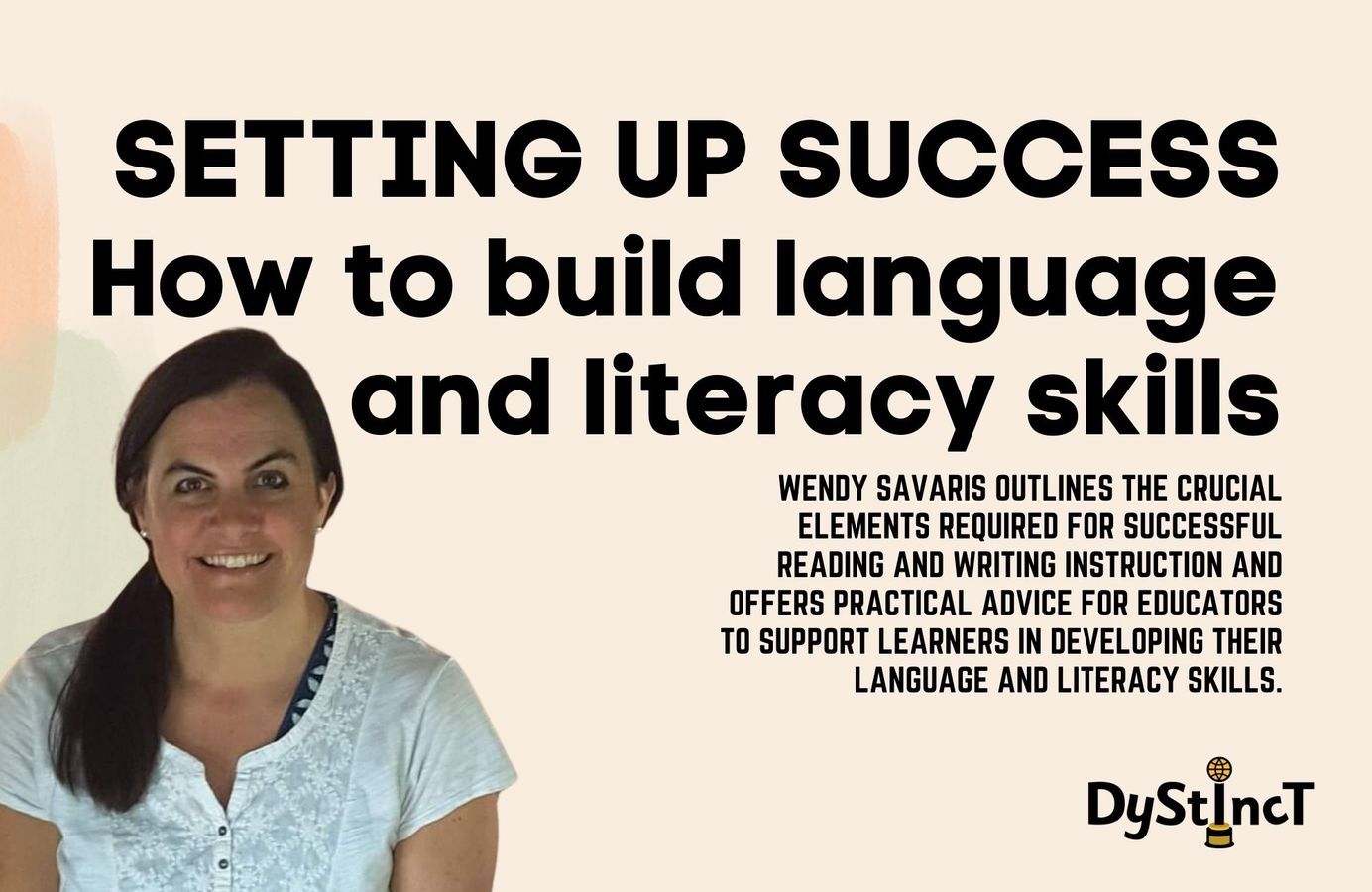
Issue 15: Setting Up Success: How To Build Language And Literacy Skills | Wendy Savaris
Wendy Savaris outlines the crucial elements required for successful reading and writing instruction and offers practical advice for educators to support learners in developing their language and literacy skills.
My students are all unique, but each has stand out strengths. Some are funny and dramatic, and others are super active, sporty kids. Some are charming with strong social skills and others are softly spoken and gentle. What they have in common is difficulties with language and literacy. Most have a dyslexic profile, and some have actual diagnoses, which might include Specific Learning Disability in Reading and/or Writing, ADD, ASD and/or DLD. Most see me for only one session a week, so I know that our session has to move at a 'perky pace.' I need to be organised and have everything well prepared so that my student stays engaged and we can use our time wisely. These kids need evidence-based instruction which will best support them in building their literacy skills and their confidence.
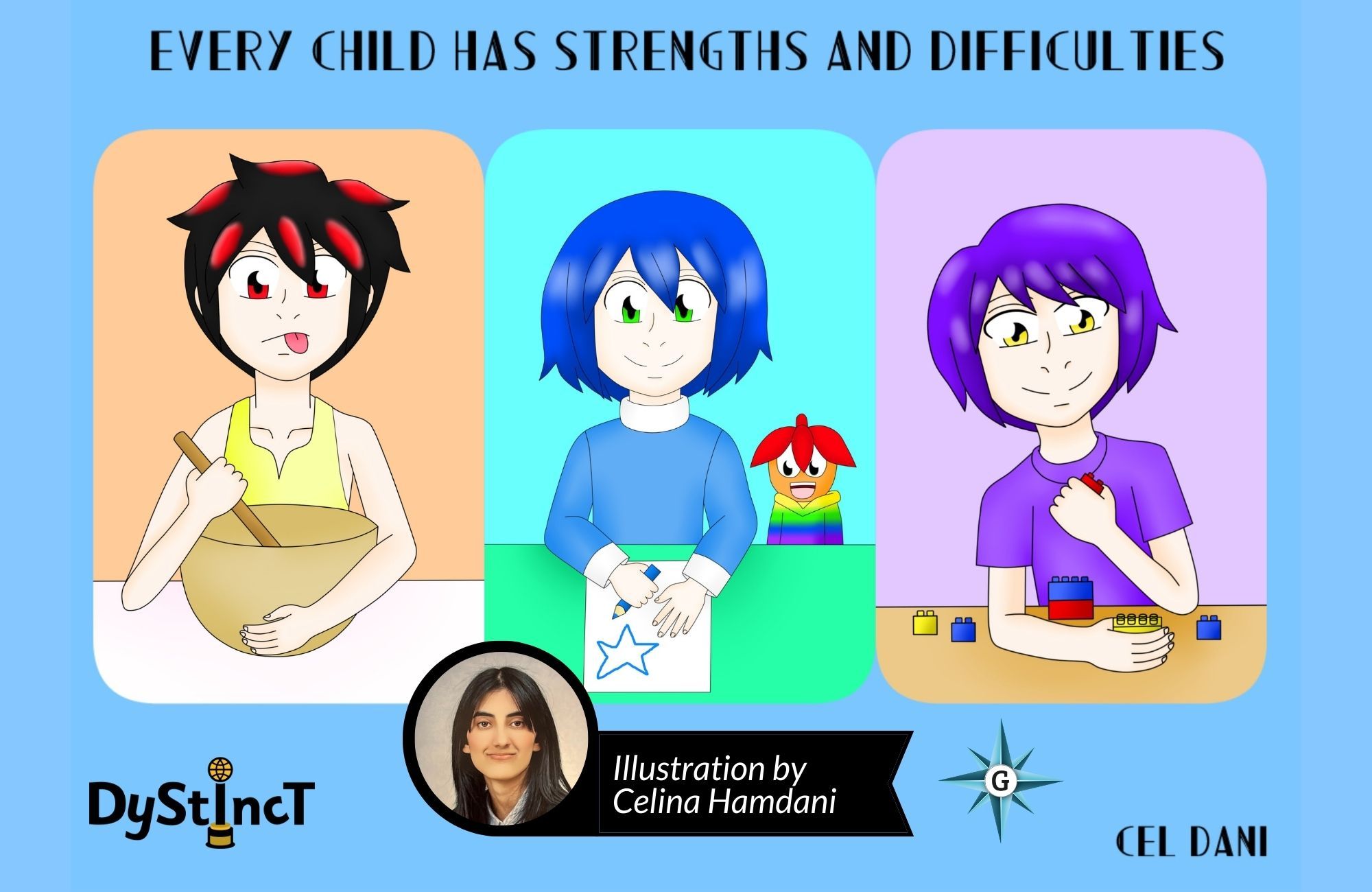
I have taught English most of my life, but from around 2015, my focus has been using Structured Literacy with multisensory methods. Courses I have completed since then include Structured Literacy (MSL), Sounds-Write and Little Learners Love Literacy. In recent years, so many excellent professional learning opportunities are also freely available. So much about best practices can be learned via webinar recordings and podcasts nowadays.
Australian: 👉Dyscastia | Knowledge For Teachers Podcast | The Structured Literacy Podcast
American: 👉Together In Literacy | Melissa and Lori Love Literacy | Sold a Story | Triple R Teaching
British: 👉Sounds-Write
Learning to read and write is complex and requires myriad skills. Here are what I see as essential ingredients in effective reading and writing instruction.
Spoken Language
Spoken Language
Spoken language is the foundation for literacy. Listening to stories, singing songs and talking about anything and everything encourages kids to be curious little learners. Reading books to young children develops their vocabulary, their general knowledge and their empathy for others.
Phonology
Phonology
Clear articulation of sounds is key. Pronouncing sounds clearly and crisply is essential. For example, /p/ is a quiet, 'popping' sound. There should not be a 'grunty' <uh> sound (the schwa) added. Some students need lots of modelling and practice to pronounce certain sounds clearly. Otherwise, their comprehension and fluency will be blocked later when reading words such as jump, prick or plain. Auditory processing refers to hearing. When a child is struggling with any form of communication, a hearing check is advised to rule out or address an impairment. Many children with a dyslexic profile struggle with phonological processing, which specifically relates to individual sounds in words and not environmental noise. For example, difficulties in discriminating between /f/ and /th/ and /b/ and /v/ can result in mix ups between <fin> and <thin> or <kerb> and <curve>.
Phonemic Awareness
Phonemic Awareness
Lots of spoken language activities is crucial in the early years. Children love action songs and moving their bodies, which makes for happy, engaged learners. When it comes to readiness for literacy, phonemic awareness needs to be the key work for preschoolers and Foundation students. Once it's time to introduce letter/sound correspondences, Foundation students need lots of practice with a limited number. Cognitive load must be lightened, and activities must be short. SATPIN is one popular beginning sequence that many programs and resources follow. SATIM is another one which supports learners with some helpful 'stretchy' consonant sounds /s/ and /m/. Research is ongoing, and I love to keep learning how I can better support my students. Recently, there has been evidence that the most important phonological awareness skill is at the phoneme level. I now know that my precious time with my student (depending on their age/stage) needs to be spent adding, deleting and manipulating sounds with letter/letter strings (rather than without.)
Segmenting Sounds
Segmenting Sounds
Breaking words into their phonemes is an important skill. This is tricky because we naturally speak quite fast, and all the sounds are 'smooshed' together. Coarticulating provides challenges, but scaffolds such as finger flicking, tapping and jumping in hula hoops helps kids with working memory challenges. Simultaneous oral segmenting/spelling is brilliant because the sounds are like glue, helping that learning to stick.
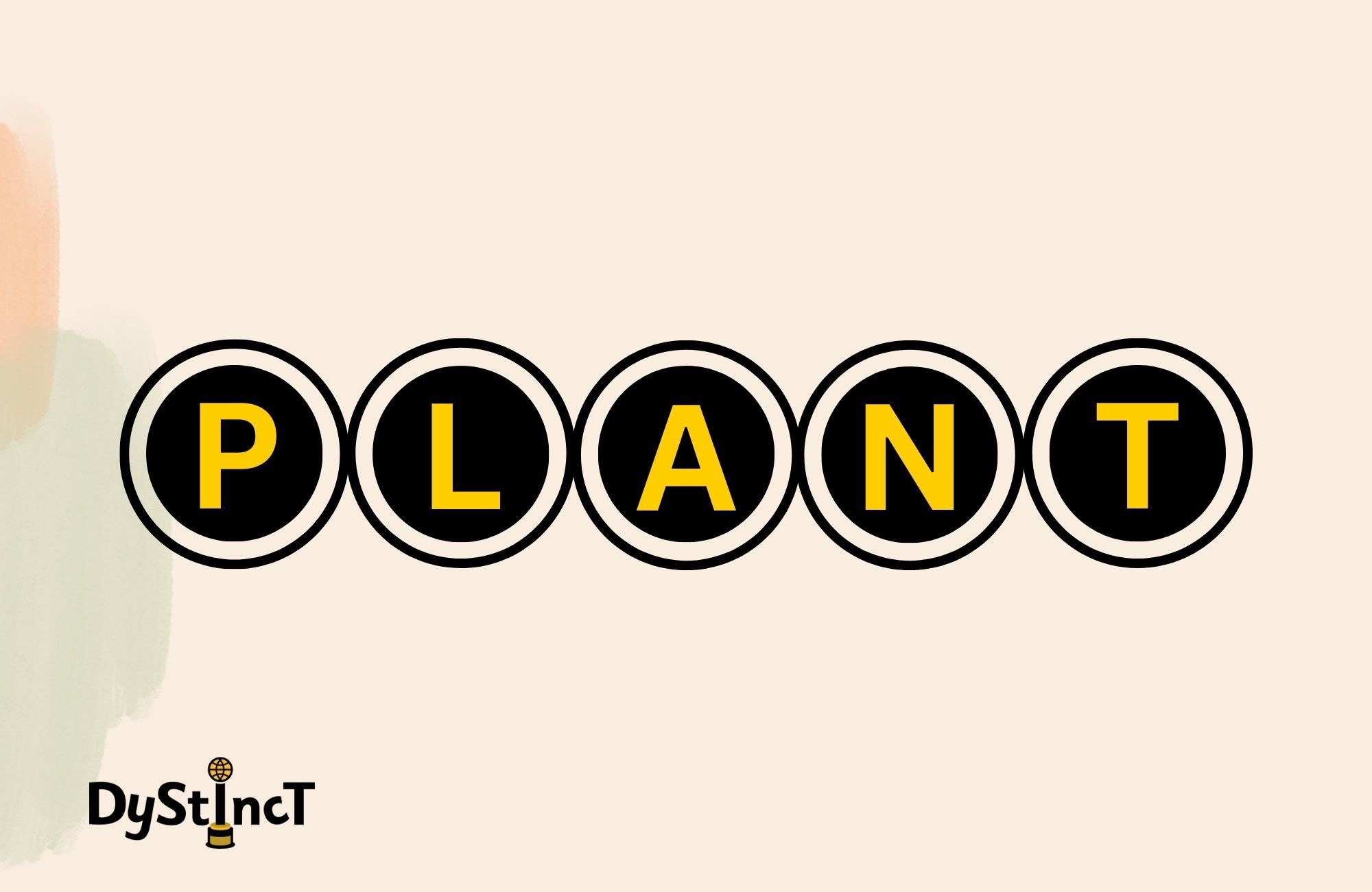
Saying the sounds AS YOU write the corresponding letter/letter string helps to move the concepts into long-term memory.
Letter Formation
Letter Formation
Once again, a specialist assessment may be a starting point. An optometrist can rule out or address any vision impairments. After all, reading and writing require clear eyesight. Explicit instruction in letter formation is necessary, and lots of practice is essential. For example, I like to group letters by their starting points to set my little learners up to be successful. For instance, I use a huge clock with a sticker on the 2 to help guide my student to learn how to write the c, o, a, d, g and q. Those gross-motor movements are a good starting point. Some children may need to work with an occupational therapist to build their skills for writing. I find scaffolds are so important in supporting children with handwriting. I love using dotted thirds, firstly on whiteboards and later in lined notebooks. I choose from three sizes depending on my student's age and stage. Down strokes such as l, h and b can be easiest for little learners to start with. I am very careful to separate <b> and <d> and model "bat and ball" and "drum and stick." These 'letter families' support my students to do lots of deliberate practice. I can gradually fade these scaffolds as my student becomes more automatic.
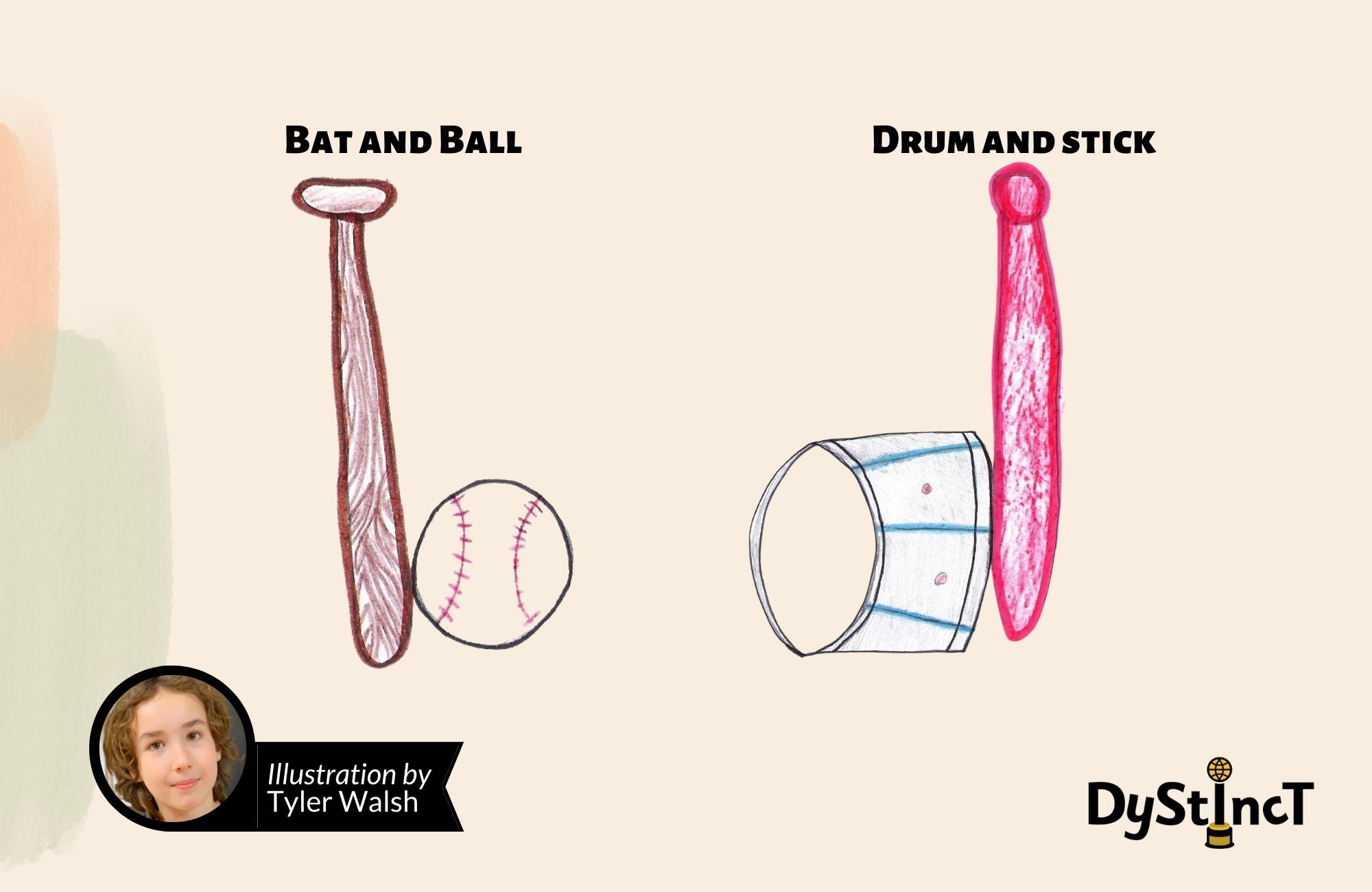
Blending Sounds
Blending Sounds
As adults with lots of years of literacy experience, reading and writing can be automatic for us. Novices, however, need lots of support to develop their blending skills. We start with 'simple' and use two and then three letters/sounds. Some children can decode and blend by saying the sounds and reading the word. Other children need a lesser cognitive load on their working memory, so stretching the sounds and pushing them together to read the word is effective. We want all children to be successful, so a third method is appropriate for some. The teacher conceals the last letter. The learner blends just two sounds and then adds the third one. In my practice, I often use Elkonin boxes and magnetic graphemes. My students love this because word building with magnets is fun. I can incorporate lots of phonemic work here: adding, deleting and manipulating phonemes are crucial skills for them to build. Often students who have been struggling for a long time have coping strategies such as visually memorising what words look like. Typically, there is also a lot of guessing when reading. Reading and spelling are reciprocal skills, but some students come to me having done some reading but limited spelling.
Encoding
Encoding
Spelling is the ability to segment words by individual sounds and use the correct sound-symbol correspondences in written form. Many of my students come to me using letter names which has actually created a block in their literacy development. I often have to begin with the Initial Phonics Code and target remediation at building their segmenting and blending skills first at the CVC level and then gradually adding complexity.
Dictation
Dictation
Hurray for dictation! All of my literacy training and teaching experience is a testament to the power of dictation in building learners' literacy skills. This is where children can cement their understanding of the sound-symbol correspondences in the English language. Simultaneous oral spelling is powerful in moving concepts to long term memory. My students need to 'overlearn.' This means I set up activities so that they are 'doing, doing, doing' in our sessions: listening and repeating, segmenting and encoding, blending and decoding, responding and explaining. Multiple exposures and lots and lots of practice is necessary to build their brain circuitry.
Decoding
Decoding
Decoding words, and then a sentence and then passages and then stories/texts is how my students gradually build their reading skills and confidence. Decodable books are just brilliant! I often say to new parents that I love to meet a new student 'where they're at' and gradually build their skills by following a cumulative sequence. For literate adults, the early stages might appear boring and easy, but I see things from little learners' perspectives. They are written for them to feel proud as they take their first steps in building their reading skills. Of course, adults need to also be sharing beautiful literature such as picture books for the rich vocabulary and world knowledge.
Phonic Books Ltd
Dandelion Readers | Magic Belt | Alba | Moon Dogs | Moon Dogs – Vowel Teams | Talisman | Titan's Gauntlets | Amber Guardians
Sounds-Write
Sounds-Write Readers | Initial Phonics Code | Extended Phonics Code | Fact Files: Animal Series (informational) | Fact Files: Countries Series (informational)
Little Learners Love Literacy
Pip and Tim | The Wiz Kids | BIG WORLD (non-fiction)
Pocket Rockets
The Phonics Code
The Phonics Code
English is a complex language, and the best way to 'crack the code' is with systematic, synthetic phonics instruction. A cumulative sequence keeps building and revising from the initial code to the extended code. I don't remember how I was taught to read and spell. Most likely, I was one of those kids (in the minority) who had phonemic proficiency and intuited a lot of the spelling conventions. I must have cracked the code and then kept 'teaching myself' and instinctively kept learning statistically, as I was a voracious reader. For educators and parents, there are phonic code charts that helpfully provide the 'big picture.'The best decodable reader series show their sequence or progression. For beginners and strugglers, handing them a chart would be overwhelming. Instead, learners will be successful when their educators follow a cumulative phonics sequence. As I tutor one on one, I am able to have my student create their own chart as we progressively learn the code. They are more likely to remember this when they have created it themselves. I make a laminated copy with magnets for my learner's kitchen fridge so that, at home, their parent can have them do regular practice to keep the concepts automatic. Alongside teaching the code, I gradually build my student's skills with multisyllabic words such as: magnet and sunset; picnic and fantastic; tricking and rented; player and better; rainbow and roundabout. Nowadays, the syllable work I consider the highest priority is closed and open syllables such as wombat and rabbit, donut and table. Being able to 'flex the vowel' and understand strong and weak syllables are important skills for my students.
This post is for paying subscribers only
SubscribeAlready have an account? Log in

